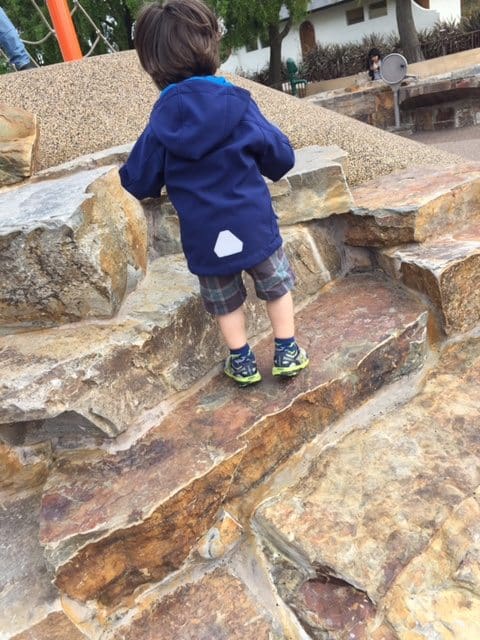Muscles can work in several ways: they can get shorter, they can lengthen, and they can stay the same length.
Generally when a muscle shortens it is generating power. For instance, when you ‘make a muscle’ you are bending your elbow and moving your hand closer to your shoulder. Your biceps is getting shorter to make this happen. It is generating power so that you can lift your hand (or a weight if you were holding one). That is why it looks like you are ‘making a muscle.’
When a muscle lengthens it is producing control. For instance when you are carrying a sleeping baby and you want to slowly lower them into their crib so they aren’t jostled, and they stay asleep you are moving your hands further away from your shoulder. Your biceps (and other muscles) are getting longer and they control how quickly they lengthen to help to make it a smooth transition and landing so your baby continues to sleep.
When a muscle stays the same it is usually holding something static or still. The muscle has to stay partially contracted so that it can keep your body part in the same position. If you have ever carried a grocery bag by the handle, with your arm partially bent, you have probably experienced this. I know my arm is screaming for relief by time I get back to my apartment!
I want to focus on the shortening and the lengthening, also known as power and control (at least in the way I describe them). We often have families who ask us why their child can go up the stairs without a problem but they still want to scoot or crawl down the stairs, or just want to be carried.
Going up the stairs requires the generation of power from their legs. When they step up, they are shortening their calves, quadriceps (thigh muscles) and their gluts (bum muscles) so that they can lift their body weight up to the next step.
Going down the stairs requires control. The calves, quadriceps and the gluts are slowly lengthening so that they are controlling the body weight for the foot will land on the next step. If there is no control, the muscles just release and the foot/body drops down onto the next step. This is especially scary for kids going down stairs because they see all the stairs in front of them that they might fall down. A great way to work on this is to break it into one or two step chunks so it is more manageable for them. You will also often see kids turning sideways to lower down to the next step. This does not require as much control as going forward down the stairs as you don’t have to move your leg over your foot so the calf does not have to do as much work. Going down a step backwards also takes out some of the control needed by the calves so you may see kids using this as an alternative method.
And, as kids grow, strength, power, and control will change with each growth spurt and the muscles will need to get used to the new dimensions of the body and get caught back up again!
I’m not sure if anyone else out there has ever started working out again and your thigh (quadricep) muscles are really sore. If you try to sit down gracefully in a chair, it is not pretty, but standing up out of the chair, while sore and painful, doesn’t look nearly as bad. That is because sitting down requires control and standing up is power. (My legs feel like this at this very moment…)
